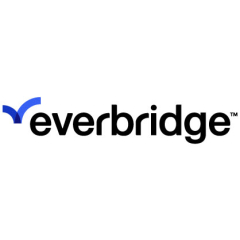What is our primary use case?
We're relatively light on use cases. We primarily use it for notifications. We're not using the Incident Management module, but we are using the SOAP service. So, we use it for integration and for holding all of our rotas and groups, and that's our main use case. Our local teams go into xMatters to invoke those groups based upon the tickets that get created in ServiceNow. They'll be for a particular team, and that team's on-call rota is held in xMatters.
How has it helped my organization?
It has reduced the time to engage engineers. This reduced time leads to improved ticket resolution and ultimately, to improved service provision for our clients, which is the ultimate gain. Our systems are down for less time because the engineers are engaged much faster.
We also quite heavily use subscriptions. We use those by way of just simple notifications to third-party stakeholders, and that has proven to be a big gain because it makes customers aware of the incidents. In addition to the resolving engineers, you can add third-party stakeholders in the notifications. Customers have been very keen on taking up subscriptions because it gives notifications to their stakeholders about the status changes of an incident and what's going on. I know that has been very well received.
We have automated our incident notification process with xMatters via subscription. So, essentially, as the support groups and engineers have been engaged to go and resolve, we also have numerous subscriptions set up so that a client's stakeholders and our internal stakeholders are notified at the same time. They would be client delivery managers from our side of the fence and then the actual client contact points on the client's side. It just gives us a very quick, easy, and effective way to increase notification awareness, and it has been very well received by the clients because they were somewhat in the dark previously. They would raise a ticket, and it would go to a resolving group, and then they would just wait, whereas this way, they're more in the loop but without being swamped with the technical detail. It is just at the awareness level, but it has proven to be very popular.
We have built workflows that meet our needs via xMatters. They're important to us. They provide very good and very configurable automation. We've found them to be very configurable and portable. We can make a workflow for client A, export it, and reimport it for client B. If it needs to be customized, we make a few changes, and it is up and running for client B in next to no time. We found the workflows to be very intuitive, very powerful, and very well received by those who would benefit from this functionality. We've found it to be a real win.
We've done custom coding where required. Most of the time, our use cases are quite simple. Wherever required, we have done extra coding, but it has been minimal. We have a couple of webhook-type workflows, and we've added extra code in there to essentially filter. There are a lot of alerts coming out of a particular system, and we've added some custom code in there to only activate certain elements of the workflow against certain priorities.
We were able to customize the workflow so that it is only for targeted incidents or particular criteria. It expanded the flexibility or functionality of xMatters. We were able to pick an out-of-the-box workflow and customize it to summarize clients only in particular trigger cases. They wanted everything captured but only certain things to be raised. So, we had to do an amount of coding in there to interrogate their initial methods, make the webhook do certain things, and make the workflow do certain things based upon the invalid data. We found that very easy to achieve. The customer was very pleased.
What is most valuable?
The automated callouts, without a doubt, are valuable. They have been a huge gain for our company. Previous to xMatters, there was no real management of the on-call resources or rotas. So, having that centralized and automated has been a huge gain.
The support groups themselves are the most useful part.
It is incredible in terms of intuitiveness and flexibility of customization. It is an excellent product. It is very usable. We are the local administration within our organization, and with the tool itself being incredibly intuitive and the support being possibly the best I've ever encountered, it is a joy to work on. It is very intuitive and very easy to work on.
We've got some webhook-type integrations with standalone systems that we have from our various clients. These integrations were very easy to do. A lot of applications that you'd like to integrate with already exist as modules in xMatters. So, a lot of the work is done for you, or it certainly leads you through it very clearly. These integrations are very easy and very intuitive to set up.
We have used the REST API as well, and it was very good. We found it to be very powerful and very well supported in terms of the API endpoints. If we needed an endpoint that was missing or wasn't available, we were able to get that added easily. It has been very good.
What needs improvement?
The only thing that has caught us out a little bit is that on certain screens, you don't have the same admin options. There should be more consistency with the admin options because not all screens provide you with the same options. As an administrator, it feels like they should always be there. For example, on some screens, there is an Export button that provides fantastic, detail-rich exports, which obviously are very handy because then you can, as an administrator, do your administration, and extract what has been done to share with or prove to others. However, the Export button is not always present, and on the screens where it isn't, you miss it. You're like, "Oh, where's the Export button?", which can be quite problematic. There should be more consistency in the UI in terms of available options for anything that is referenced data or configurable. If you can put it in, there should be a way to run an export function to essentially pull it out. That's the only improvement that I can really think of. There is a little inconsistency, but I believe that has been simply explained to us. xMatters has been developed and redeveloped many times. So, different hands have touched it, and I guess not everyone thinks that an Export button is required, but we've certainly found it to be a very useful function.
Buyer's Guide
xMatters
September 2025
Learn what your peers think about xMatters. Get advice and tips from experienced pros sharing their opinions. Updated: September 2025.
869,952 professionals have used our research since 2012.
For how long have I used the solution?
It predates me, and I think we're into our third year.
What do I think about the stability of the solution?
It is near perfect. It is one of the most stable pieces of software that I've ever used in more than 20 years in IT. It is an incredibly stable platform.
What do I think about the scalability of the solution?
With our limited experience, it seems to be perfectly scalable. You can make it do as much or as little as required. The ability to make those changes very quickly in a live environment is very good because if a new requirement comes in, we can turn it around almost as quickly as we can type. There are very few barriers to stop you from scaling as required.
In our environment, we have less than a thousand users.
How are customer service and support?
Their support is exemplary. I would rate them a 10 out of 10 or even higher. In 20 years in IT, without a shadow of a doubt, it is the best support I've ever received from a vendor. They are so attentive and knowledgeable. They present themselves with such a friendly and family-based vibe or approach that they stand out from the crowd. You almost want it to go wrong so that you have an excuse to speak to their support. They are exemplary.
I cannot speak highly enough of the quality of their interactions, whether that's raising support through the support links on the tool itself, or when we have a monthly catch-up call with Jamie Mallon. He always comes to us with tons of knowledge, tons of new news, and loads of warmth and engagement, and that's pretty standard. They do things in a very cool way. The quality of support that I get from them is very noticeable as compared to any other vendor I've worked with, bigger or smaller. The xMatters guys are definitely the best. They do things in a brilliant way, and for Everbridge, their new parent company, there is a lot to learn. They should be adopting as much of xMatters' style as they can because they really are excellent.
Which solution did I use previously and why did I switch?
We didn't have a single solution. People were passing around spreadsheets, and we had a Lotus Notes database that some people could access to refer to the information, but not everyone. So, it was essentially just a mess. From that point of view, xMatters has just given a huge boost. xMatters is far superior in the way that it is highly configurable, and its features really support the actual use cases of an engineer. If an engineer is absent, they mark themselves as away, and if you have set the rotas correctly, xMatters will automatically schedule in a replacement resource. That's a very simple thing, but without xMatters, that was a very laborious and manual task for engineers. If they forget to do it, then suddenly, you don't find anyone on call. The way xMatters automates this is just far superior to the previous solution that we had.
How was the initial setup?
It predates my time on the team. So, I don't know about the initial setup.
Its maintenance is practically zero. From our side, we're primarily doing account creations as the talent pool of resolving engineers changes and shifts. We also configure any new workflow or webhook requirements that come through. We set up the groups and support users, but they configure their own rotas because we like to get them to own that side of it so that they can look after their own team going forward. We initially support them through the rota creations to make sure it is all set up in the way they need it to be operational.
This maintenance time varies depending on the demand. We've got a relatively stable take-up at this point. At its busiest, we were spending half a working week on it. At this stage, where we've got things configured and pretty stable, we are down to a very minimal amount of hands-on support that is required from our end, which is great. The system just runs. We're called into it when there's an issue or when there's a new take on of some kind, but for the majority of it, we're able to just let it run and do its thing.
Three people work on xMatters day-to-day. We're support engineers, and this is one of the things that we look after. We support it in addition to numerous other systems we all look after. We don't look after just xMatters. There is not a great deal of work for us to deal with on a day-to-day basis when it comes to xMatters.
What was our ROI?
I'm not involved with the numbers in that regard, but logically, we must have had an ROI because we've seen service gains. We've seen increased efficiency. It obviously passed in terms of time and cost savings across the board. All of our incidents are dealt with quicker now because the engineers are engaged so much quicker.
What's my experience with pricing, setup cost, and licensing?
I can't really comment on the value in terms of comparison. It could be the most expensive product in the world. It could also be the cheapest, or it could be safely in the middle.
It feels like good value in the sense that the service is excellent. The people above me who look at such things have renewed it a couple of times, and I think they would have thought whether it was good value, whether it was wildly overpriced, or whether there were better and cheaper alternatives. So, from that perspective, the pricing is fair and proper.
What other advice do I have?
I would advise others to go for it. It is great. My advice would be to engage with the xMatters resources themselves because they will engage and guide a potential new customer very fairly. They won't oversell. They will get you the correct solution, and they will be very helpful in helping you to get that to work. So, my advice would be to go for it 100%.
I would rate it a 10 out of 10. Nothing is perfect, and there is always room for improvement, but it is very hard to see where. This is an excellent product.
Disclosure: PeerSpot contacted the reviewer to collect the review and to validate authenticity. The reviewer was referred by the vendor, but the review is not subject to editing or approval by the vendor.








